Disclosure: This article contains affiliate links. We may earn a commission from purchases at no extra cost to you, which helps our travel content.
The taxi driver looked at me with genuine confusion when I told him I was spending a weekend exploring Pune. 'But why not Mumbai or Delhi?' he asked, navigating through the morning traffic. It's a reaction I've grown accustomed to during my travels across India. Pune isn't typically on the international traveler's radar, overshadowed by its flashier coastal cousin Mumbai just a few hours away. But that's precisely why I came. As someone who has wandered through the crowded markets of Bangkok and the hidden alleyways of Kyoto, I've developed a sixth sense for cities with secret souls - those places where authentic life unfolds beyond the tourist brochures. Pune, with its fascinating blend of academic energy, Maratha history, and rapidly evolving urban landscape, called to me like few other Indian cities have. What follows is my weekend journey through the hidden corners of this education capital, where ancient temples stand in the shadow of gleaming tech parks, and where the next generation of India's thinkers sip chai in centuries-old quarters. Chalo, let's explore.
Finding Your Bearings: Pune's Urban Geography
Pune stretches across the Deccan Plateau like a living, breathing organism, with neighborhoods that seem to have distinct personalities and moods. Unlike the vertical sprawl of Mumbai, the city unfolds horizontally, making it surprisingly walkable in certain pockets - a rarity in urban India.
My exploration began in the old city center, specifically the labyrinthine lanes of Kasba Peth, one of Pune's oldest neighborhoods. Dating back to the 5th century, these narrow gullies hold the city's soul. I deliberately left my travel guidebook in my backpack, preferring instead to get gloriously lost. The morning light cast long shadows across the peeling paint of colonial-era buildings, where ornate wooden balconies (called kattas) hung precariously overhead.
Navigating these streets requires a willingness to embrace disorientation. Google Maps struggles with the warren of unnamed alleys, and that's exactly the point. It's in these digital blind spots that Pune reveals itself most honestly.
The city operates on a distinct rhythm. Mornings begin with the metallic symphony of rolling shutters as shopkeepers open for business, followed by the hum of scooters and the calls of vegetable vendors. By afternoon, university students flood the cafés in areas like Fergusson College Road and Koregaon Park, their animated discussions on politics and philosophy spilling onto the streets.
Pune's seven hills create natural boundaries between neighborhoods, each with its own character. Parvati Hill offers the perfect vantage point to understand this geography - climb the 103 stone steps to the temple complex at sunrise, and you'll see the city awakening below, the morning light painting the landscape in shades of amber and gold.
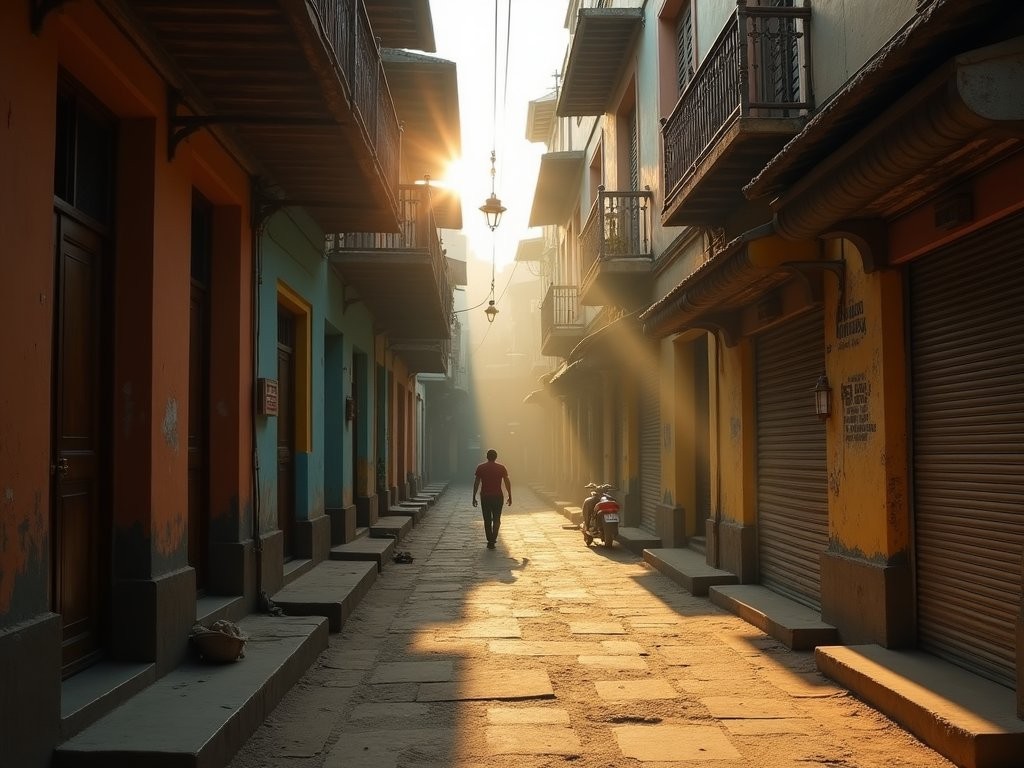
💡 Pro Tips
- Download offline maps before exploring the old city areas as network connectivity can be spotty in the narrow lanes
- Use Pune's extensive rickshaw network rather than cabs - they're cheaper and can navigate the narrower streets
- The city is most alive between 4-7pm when students and workers fill the streets - plan your urban explorations accordingly
The Academic Heartbeat: Beyond the University Gates
They don't call Pune the 'Oxford of the East' without reason. The city houses over 100 educational institutions, with Savitribai Phule Pune University (formerly University of Pune) standing as its intellectual nucleus. But the academic energy extends far beyond formal campuses.
Rather than touring the university as a standard visitor, I chose to experience Pune's intellectual culture through its café scene. Fergusson College Road - affectionately called 'FC Road' by locals - serves as the nerve center of student life. Here, between modest bookshops and street food vendors, I discovered Vaishali, a legendary café that has fueled student debates since 1951. Over a plate of their renowned masala dosa and filter coffee, I eavesdropped on passionate discussions ranging from national politics to existential philosophy.
The true hidden gem, however, was Pagdandi Books Chai Cafe in Baner. Part bookstore, part café, this cozy nook houses thousands of carefully curated titles alongside excellent organic teas. I spent a rainy afternoon here, my travel journal open beside me, listening to a spontaneous poetry reading by local university students. The owner, Neha, explained how the space functions as an informal extension of university life - hosting book clubs, language exchanges, and even academic lectures after hours.
For those seeking a deeper connection to Pune's academic tradition, the Bhandarkar Oriental Research Institute offers a glimpse into serious scholarship. This unassuming building houses one of the most important manuscript collections in India, including critical materials used in the first critical edition of the Mahabharata. I was the only visitor during my Wednesday afternoon visit, giving me the rare opportunity to speak at length with Dr. Patwardhan, a Sanskrit scholar who patiently explained the institute's century-long mission to preserve ancient knowledge.
What struck me most was how Pune's academic culture bleeds into everyday life. In a small lari (food cart) near Deccan Gymkhana, I watched as the owner - a former economics professor - explained inflation to his customers while serving up vada pav. Education here isn't confined to classrooms; it permeates the streets, the cafés, and the collective consciousness of the city.
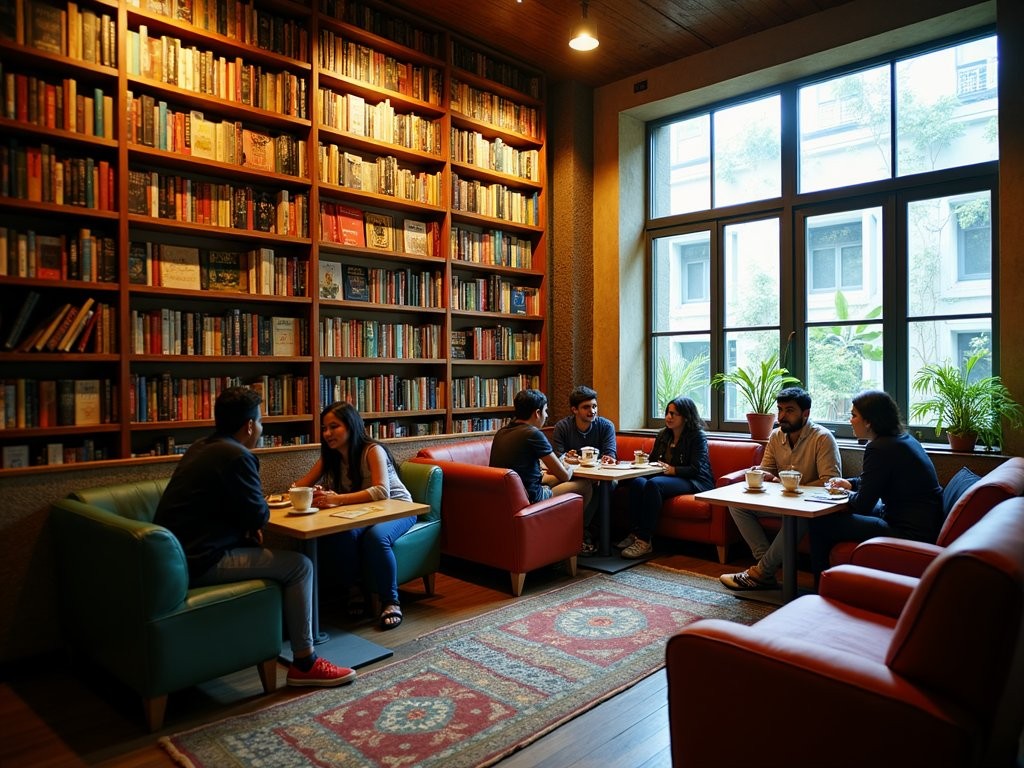
💡 Pro Tips
- Visit Savitribai Phule Pune University campus early morning (before 8am) when students practice yoga and meditation on the lawns
- Many college canteens are open to the public and offer incredibly affordable authentic Maharashtrian meals
- Check bulletin boards in cafés around FC Road for announcements about public lectures and cultural events
Peths and Passages: Navigating the Old City
The heart of Pune beats within its peths - the 17 historic neighborhoods established during the Maratha Empire. Each peth has its own character, specialty markets, and hidden treasures that most tourists never discover. Armed with a bottle of water and my trusty walking shoes (essential for navigating the uneven cobblestones and surprise puddles), I dedicated a full day to exploring these ancient quarters.
I began in Shukrawar Peth, named after Friday (Shukrawar) when its market traditionally thrived. While guidebooks might direct you to Dagdusheth Halwai Ganpati Temple, I found myself drawn to the lesser-known Nana Wada - the partially restored residence of Nana Phadnavis, a legendary 18th-century Maratha minister. The caretaker, noticing my interest in the architectural details, unlocked rooms typically closed to visitors, revealing intricate wooden carvings and hidden chambers once used for clandestine political meetings.
Budhwar Peth offered a completely different atmosphere. Once known for its Wednesday market, this area now houses Pune's red-light district alongside ancient temples - a juxtaposition that speaks to the complexity of urban India. While not recommended for solo female travelers at night, during daylight hours it reveals fascinating layers of social history. Here I met Shanti, a community worker with a local NGO who explained their efforts to provide healthcare and education to the children of sex workers.
The narrow lanes of Sadashiv Peth hold some of Pune's most beautiful wadas (traditional Maharashtrian houses built around courtyards). The most famous is Vishrambaug Wada, but I preferred the less-visited Bhau Saheb Rangari Wada. Built in 1789, this modest structure played a crucial role in India's independence movement as a secret meeting place for revolutionaries. The elderly guide spoke little English but communicated volumes through expressive gestures as he showed me the hidden room where freedom fighters once gathered.
The most rewarding discoveries came from simply wandering without purpose. In a nameless alley in Somwar Peth, I stumbled upon an artisan crafting traditional Kolhapuri chappals (leather sandals) using techniques passed down through generations. In Raviwar Peth, I followed the aroma of freshly ground spices to a 90-year-old masala shop where the owner insisted I sample his signature blends, explaining each component with scholarly precision.
The peths aren't merely historical curiosities - they're living neighborhoods where tradition and modernity coexist in fascinating tension. Ancient temples share walls with mobile phone shops; century-old sweet shops serve treats alongside modern cafés offering espresso. This is where Pune's soul resides, in these contradictions and continuities.
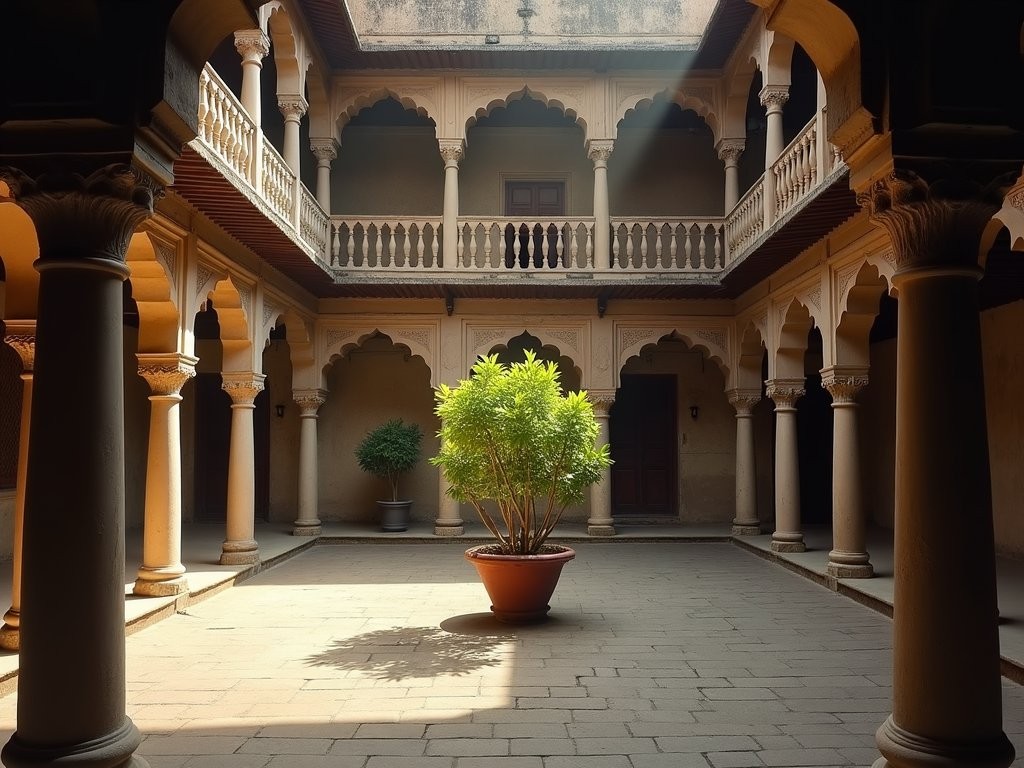
💡 Pro Tips
- Start your peth exploration early morning (around 7am) when the light is beautiful and before the crowds and heat intensify
- Carry small denominations of cash as many small shops and food stalls don't accept cards
- If you get lost (which is part of the experience), locals are generally helpful - ask shopkeepers rather than people walking by
Culinary Corners: Beyond Maharashtrian Classics
To understand a city, one must taste it. While Pune proudly offers traditional Maharashtrian cuisine, its status as an education hub has created a fascinating culinary mosaic influenced by students and professionals from across India and beyond.
My mornings invariably began at Goodluck Cafe on Fergusson College Road, a Parsi-Irani establishment that has been serving bun maska (soft bread with butter) and chai since 1935. By 7am, the café fills with a diverse crowd - elderly locals reading newspapers, students reviewing notes, and professionals grabbing breakfast before work. The magic lies not just in the perfectly brewed Iranian tea, but in the democratic atmosphere where social barriers dissolve over shared tables.
Kayani Bakery on East Street is another institution, famous for its Shrewsbury biscuits and mawa cake. Arriving just after they opened, I joined the inevitable queue, chatting with a professor who had been buying his bread here for 40 years. 'The recipe hasn't changed since the 1950s,' he assured me, 'and that's exactly as it should be.'
For lunch, I ventured beyond the tourist recommendations to Hotel Shreyas in Deccan Gymkhana. This unassuming restaurant serves an authentic Maharashtrian thali on banana leaves. The owner, noticing my interest in regional cuisine, personally explained each component of the meal - from the subtly spiced amti (dal) to the coconut-infused vegetables and the cooling sol kadhi.
Pune's student population has spawned budget food streets that offer culinary adventures for minimal cost. JM Road transforms each evening as food carts appear, serving everything from Tibetan momos to Kerala-style dosas. Here I discovered Marzorin, a humble sandwich shop where locals have been queuing for decades. Their simple vegetable cheese sandwich, prepared with house-made mayonnaise, justified every minute of the 20-minute wait.
The most surprising find was Swig in Koregaon Park, hidden behind an unmarked door in a residential building. This speakeasy-style bar serves craft cocktails using local ingredients - my Pune Sour featured indigenous berries and homemade bitters. The bartender, Rahul, previously worked in Singapore's cocktail scene before returning to his hometown to 'elevate Pune's drinking culture,' as he put it.
For those seeking culinary souvenirs, I recommend visiting Dorabjee & Co. in Camp Area, one of Pune's oldest grocery stores. Founded in 1879, this family-run shop stocks everything from locally produced honey to small-batch spice blends. I filled my packing cubes with fragrant chai masala and Puneri turmeric to bring home flavors of the city.
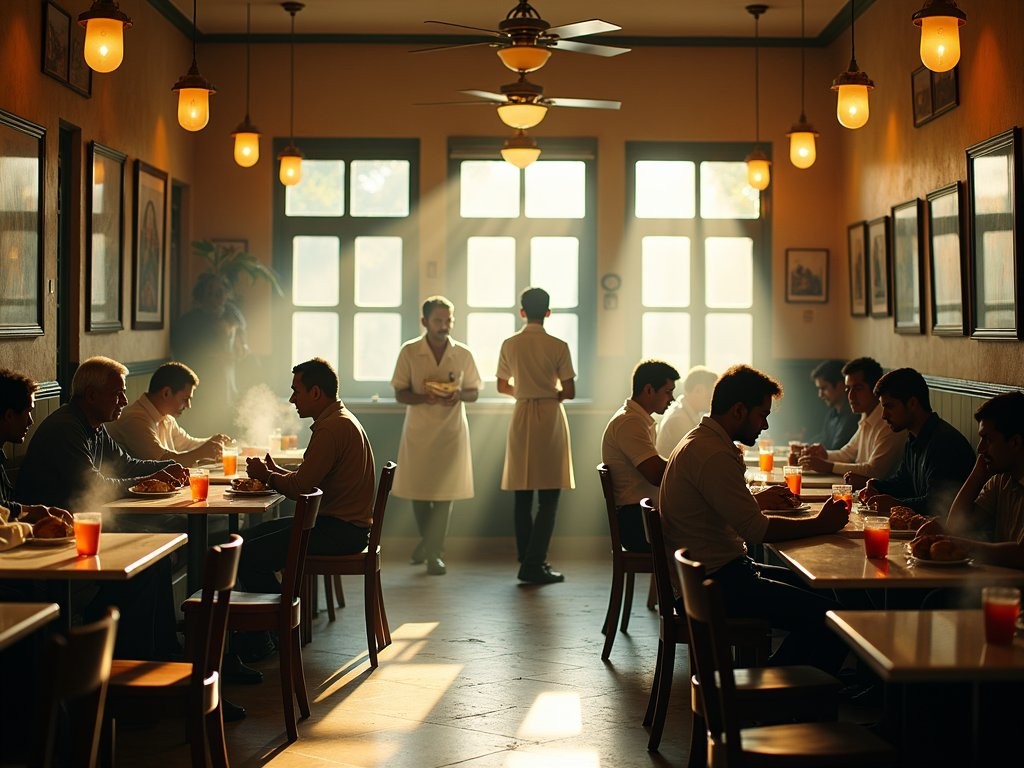
💡 Pro Tips
- Most traditional restaurants close between lunch and dinner (roughly 3-7pm) - plan your meals accordingly
- For authentic street food with safer preparation standards, follow the local office crowds during lunch hours
- Vegetarians will find Pune exceptionally accommodating, with many restaurants being exclusively vegetarian
Urban Green: Unexpected Nature Havens
Pune surprises the urban explorer with pockets of greenery that provide respite from the sensory intensity of Indian city life. These natural havens offer not just ecological value but serve as important social spaces where the city's residents connect across demographic lines.
The most accessible is Okayama Friendship Garden on Sinhagad Road, inspired by Japanese design principles. I arrived at 6am to find locals practicing yoga and tai chi among the meticulously arranged rocks and water features. The garden was created to commemorate Pune's sister-city relationship with Okayama, Japan, and as someone with Japanese heritage, I found the cultural fusion particularly moving - bonsai techniques applied to native Indian species created a unique aesthetic that felt both familiar and novel.
For a wilder experience, I took a local bus to Vetal Tekdi, one of the hills that define Pune's topography. This urban forest serves as the city's lungs and offers surprisingly challenging hiking trails. My morning trek revealed a side of Pune invisible from the streets below - panoramic views, birdsong, and encounters with local running groups who gather daily. A retired professor who has been walking these paths for 40 years pointed out medicinal plants and shared his concerns about encroaching development threatening this green space.
The Empress Garden, established during British colonial rule, offers a more manicured experience. What makes this 39-acre botanical garden special isn't just its collection of exotic trees but how it functions as a democratic social space. I witnessed a multi-generational family celebrating a birthday alongside college students rehearsing a play, while elderly couples strolled along shaded paths. The garden's annual flower show in January transforms it into a riot of color worth planning your trip around.
Perhaps the most magical green space is the lesser-known Pashan Lake. Once heavily polluted, this water body has been rejuvenated through community efforts and now attracts over 150 bird species. I joined a local birdwatching group at dawn, sharing binoculars and hushed excitement as purple herons and white-throated kingfishers made appearances. My guide, Aditya, a software engineer by profession and conservationist by passion, explained how urban lakes serve as crucial stopover points for migratory birds.
These green spaces reveal Pune's complex relationship with urbanization - a city rapidly developing while its citizens fight to preserve natural havens. In conversations with local environmental activists, I learned about ongoing battles to protect these areas from development projects, revealing a civic engagement that tourists rarely glimpse.
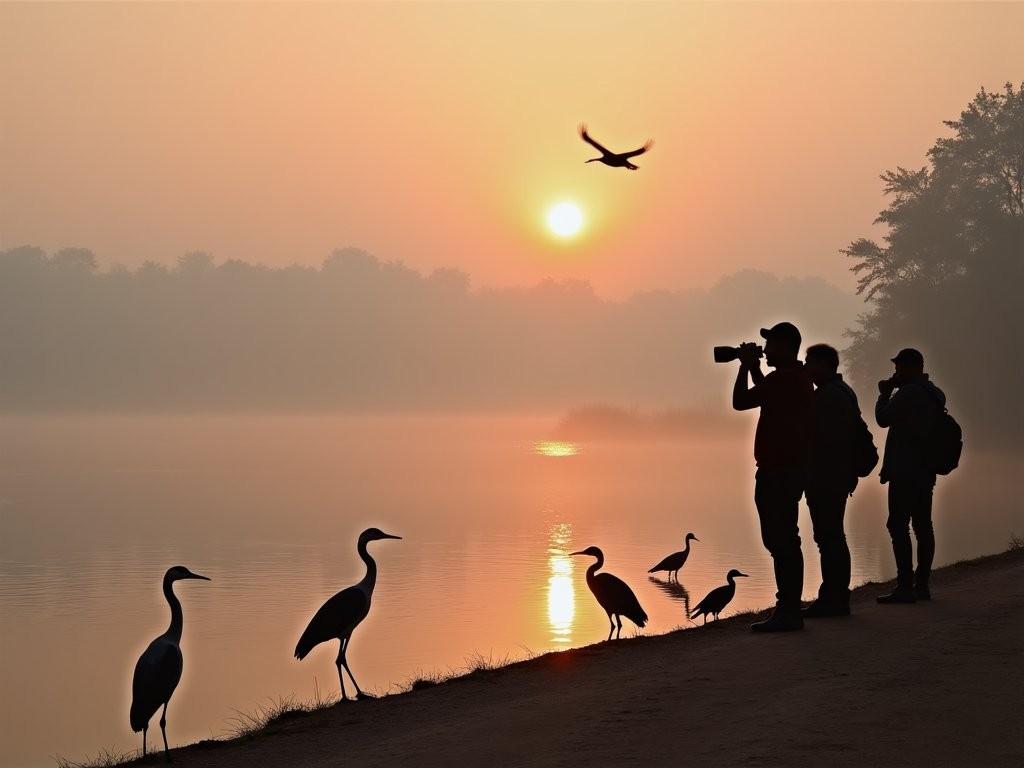
💡 Pro Tips
- Visit urban green spaces early morning (5:30-7:30am) when they're most peaceful and wildlife is active
- The Pune Birdwatchers Club welcomes visitors to their weekend outings - check their Facebook page for schedules
- Carry a reusable water bottle as most parks have filling stations but plastic bottles are discouraged
New Pune: Creative Hubs in Unexpected Places
Beyond its historical identity and academic reputation, Pune is experiencing a creative renaissance that few outside the city recognize. Former industrial spaces and overlooked neighborhoods are being transformed into vibrant cultural hubs that reveal the city's evolving identity.
My exploration of this 'New Pune' began in Mundhwa, where an abandoned warehouse has been converted into TIFA Working Studios. This artist-run space hosts exhibitions, performances, and residency programs that connect Pune's creative community with international artists. During my visit, I witnessed the installation of a sound art piece by a Japanese-Indian collaborative team, exploring themes of urban memory through field recordings gathered across Pune. The center's director explained how such spaces are creating alternatives to the commercial art world of Mumbai and Delhi, allowing for more experimental practices.
In the Yerawada neighborhood, Pune Street Art Project has transformed mundane walls into powerful visual commentaries. Armed with my compact camera to document these ephemeral works, I followed their online map to discover murals addressing everything from environmental concerns to gender equality. The most striking was a three-story portrait of an elderly waste picker, honoring the invisible labor that keeps the city functioning.
The tech industry that drives much of Pune's economy has also spawned interesting cultural offshoots. Venture Center in the university area functions as an incubator not just for tech startups but for creative entrepreneurs merging traditional crafts with contemporary design. I met Ananya, whose studio develops natural dyes from food waste generated by Pune's restaurants, creating a circular economy model while reviving traditional textile techniques.
The Mula Mutha River Project represents another face of creative Pune - an ecological art initiative working to reconnect citizens with the polluted waterways that once defined the city. Their riverside interventions include temporary installations, citizen science projects monitoring water quality, and performance events that reimagine the relationship between urban development and natural systems.
Perhaps most revealing was Ascending Aromas, a specialty coffee shop hidden in a residential building in Koregaon Park. Founded by a former IT professional who trained as a barista in Melbourne, this tiny space has become an informal hub for Pune's digital nomads and creative freelancers. Conversations here shifted fluidly between Marathi, English, and tech jargon, touching on blockchain applications, documentary filmmaking, and urban farming initiatives - a microcosm of Pune's evolving identity.
What makes these spaces significant isn't just their creative output but how they're reshaping Pune's self-image - from a conservative educational center to a city with creative ambitions that extend beyond national boundaries.
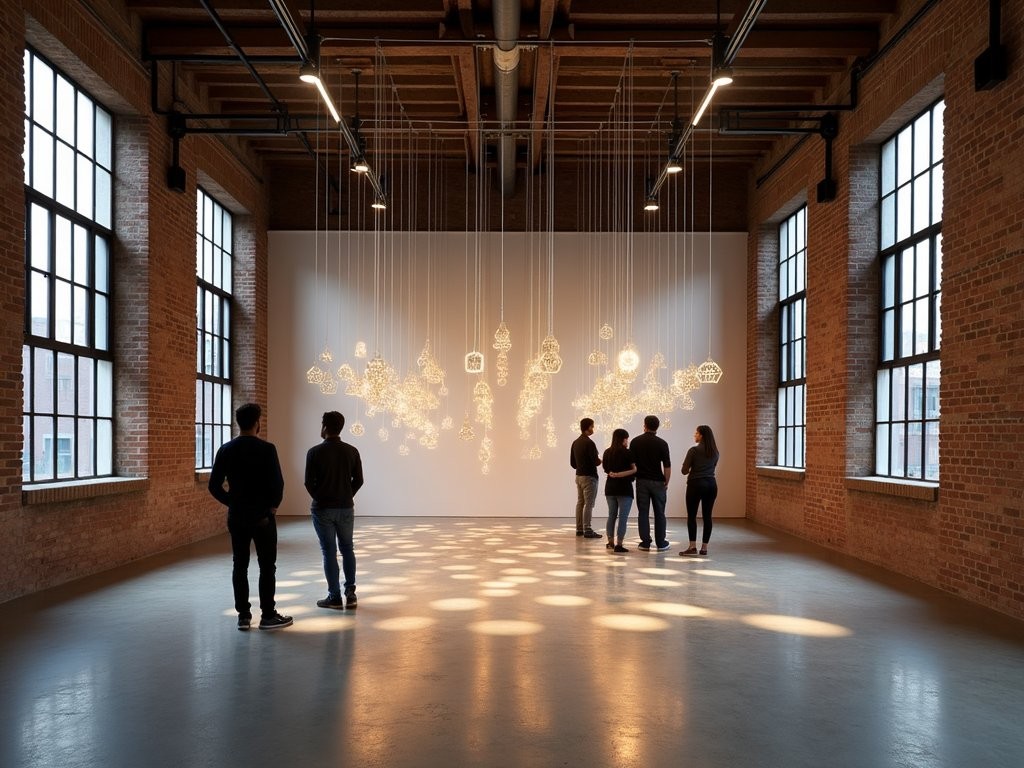
💡 Pro Tips
- Follow @PunePopUp on Instagram for announcements of temporary exhibitions and cultural events that don't make it into tourist guides
- Many creative spaces are in residential areas with minimal signage - save precise locations on your offline maps
- Creative venues often close on Mondays rather than the traditional Sunday - plan accordingly
Final Thoughts
As my weekend in Pune drew to a close, I found myself back at Goodluck Cafe, sipping one last cup of Iranian chai. The elderly waiter recognized me from my previous visits and asked if I'd found what I was looking for in his city. It was a profound question that made me reflect on what urban exploration truly means. Pune doesn't reveal itself through monumental attractions or tourist spectacles. Its essence lives in the conversations between students dreaming of changing the world, in the quiet dignity of ancient neighborhoods adapting to modern pressures, and in the creative energy bubbling up in unexpected corners.
This education capital taught me something that wasn't in any curriculum - that the most rewarding cities are those that don't perform for tourists but instead invite you to become temporary participants in their authentic daily rhythms. Whether you're wandering through centuries-old peths, joining early morning birdwatchers at Pashan Lake, or discovering emerging art in converted warehouses, Pune offers a uniquely honest urban experience. À la prochaine, Pune - until we meet again.
✨ Key Takeaways
- Pune rewards explorers who venture beyond the obvious attractions into its historic peths, academic haunts, and emerging creative districts
- Early mornings offer the most authentic experiences - from birdwatching at urban lakes to joining locals for bun maska at historic cafés
- The city's identity as an education hub creates unique cultural spaces where intellectual and artistic communities flourish
📋 Practical Information
Best Time to Visit
October to February (fall through winter)
Budget Estimate
$30-50 per day including accommodations, food and local transport
Recommended Duration
2-3 days for urban exploration
Difficulty Level
Easy

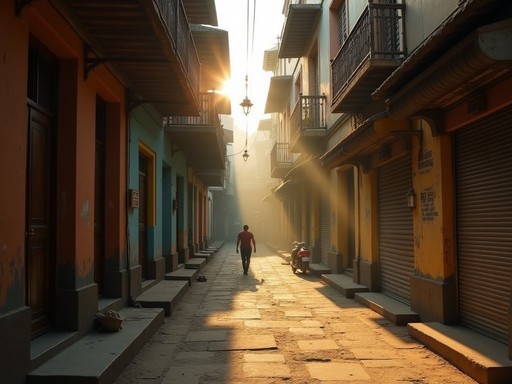
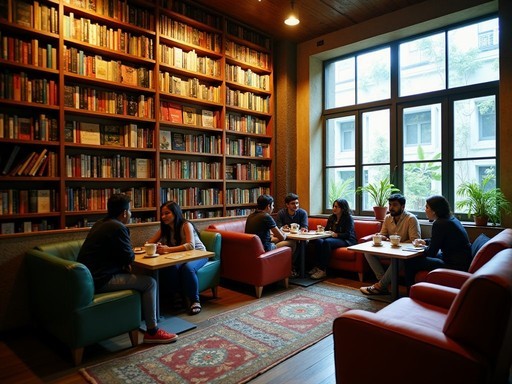
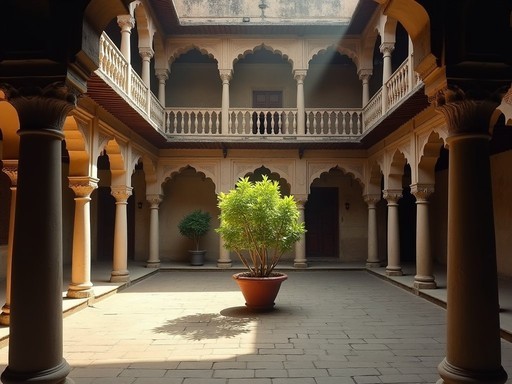
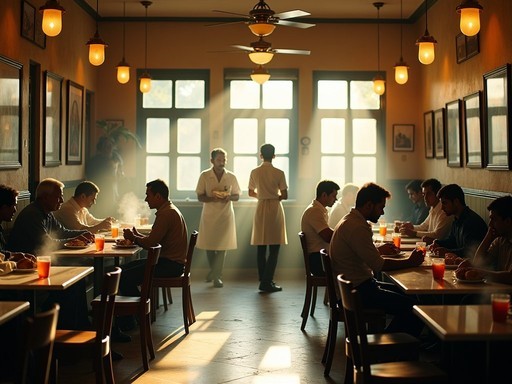

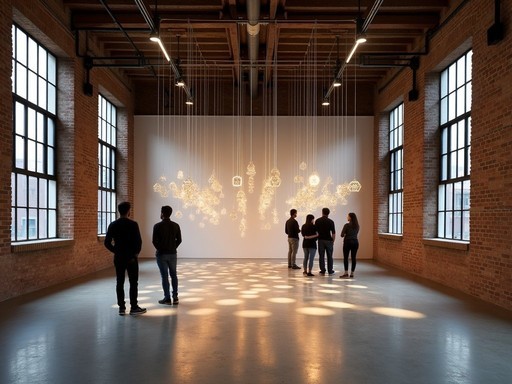


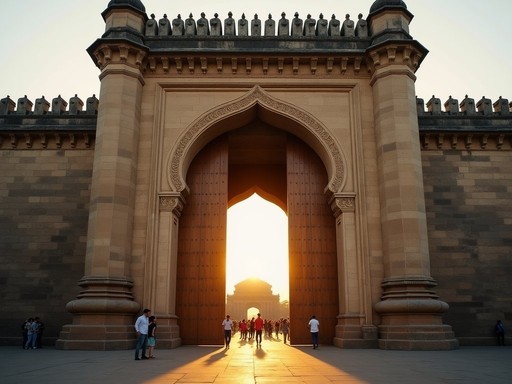
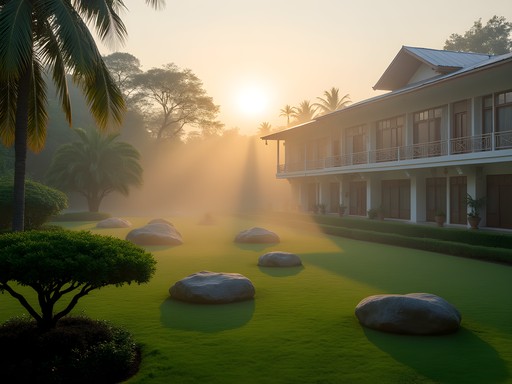






Comments
mountainrider
If anyone's planning to visit Pune, the city bus system is actually pretty decent for getting around. Download the Pune Mahanagar Parivahan app - saved me tons on rickshaw fares. Also, the area around Fergusson College has some great affordable eats that don't compromise on taste. Try Vaishali for breakfast - their dosa is legendary!
roamone
Seconding the Vaishali recommendation. That dosa is worth the wait!
Casey Andersson
Kenji, your piece captures the essence of Pune beautifully. While I typically opt for luxury travel, Pune was where I made an exception and embraced its academic charm. The juxtaposition of colonial architecture against modern tech parks tells such a story! I'd add Koregaon Park to your list - it's where old wealth meets new cafes. The lane behind ABC Farms has some incredible boutiques. And for anyone reading this - don't skip the thali at Shreyas. It's not hidden (there's always a queue) but it's the most authentic Maharashtrian food experience. Make a reservation or be prepared to wait, but it's absolutely worth it. Kenji, did you make it to any of the music scenes? The classical music gatherings at Sawai Gandharva Hall were a highlight of my visit.
starperson
LOVE THIS POST!!! Your photos of Goodluck Cafe make me want to book a flight right now!! Those bun maska shots are making me hungry! 😍😍😍
journeyblogger
Going to Pune next month! How many days would you recommend to really explore these hidden corners? And was the public transport easy to figure out?
Kenji Brown
I'd say minimum 3 days to get beyond the surface. Public transport is decent - buses are comprehensive but can be crowded. The new metro lines are great but limited. Auto-rickshaws are your best bet for exploring the nooks and crannies!
mountainseeker
Totally agree with Kenji. Also download the Ola app - it's like Uber but works great in Pune for booking autos and cabs.
freewanderer
Going to Pune next month for work but will have weekends free. Is it safe to explore the old city areas solo? Any tips for a first-timer?
Casey Andersson
Absolutely safe! I explored Pune solo last year. The old city is perfectly fine during daylight hours. Just be aware it gets very crowded in the evenings. I'd recommend starting at Shaniwar Wada and working your way through the peths. Download an offline map as the lanes can get confusing. And don't miss stopping for mastani (local ice cream) at Sujata Mastani - divine after walking all day! I found my crossbody bag perfect for navigating the busy markets while keeping essentials secure.
freewanderer
Thanks so much Casey! That's really helpful. Will definitely try the mastani - sounds perfect after exploring in the heat.
Frank Garcia
Kenji, your exploration of Pune's academic side really resonates with me. I backpacked through Maharashtra last year and spent a week in Pune that I hadn't planned for originally. The old city's peths are a maze worth getting lost in! I'd add that Mandai market early morning is absolutely worth the early alarm - watching the flower sellers set up around 5am gives you a glimpse into daily life most tourists miss. Did you manage to check out any of the hill forts around the city? Sinhagad was my highlight, especially taking the local bus there with students heading out for weekend trips.
mountainrider
The bus to Sinhagad was such an adventure! Did you try the zunka bhakar at the top? Those little food stalls with the grandmas cooking were the highlight for me.
Frank Garcia
Absolutely! That zunka bhakar after the hike was possibly the best meal I had in India. Simple but perfect. Did you take the direct trail up or the longer route?
roamone
Finally someone writing about Pune instead of the usual tourist spots! Refreshing take.
Megan Martin
Kenji, this is such a refreshing perspective on Pune! I was there for a business conference last month and wish I'd had your guide beforehand. The city definitely has an intellectual energy that's palpable. I'd add that the Aga Khan Palace is worth visiting - not just for its historical significance but also for the peaceful gardens that offer a break from the urban hustle. For business travelers with limited time, I found using the Uber auto-rickshaws incredibly efficient for getting around the university area. They're quick, inexpensive, and you avoid the haggling. I used my pocket translator a few times when exploring the deeper parts of the old city, which helped tremendously with the local Marathi speakers.
journeyblogger
Did you feel safe walking around the Peths area alone? Planning my first India trip and a bit nervous about solo exploration.
Megan Martin
I found Pune quite safe during daytime, especially in the university areas. For the Peths, I went during busy shopping hours when there were plenty of people around. Common sense precautions apply as anywhere!
coffeequeen
Those narrow lanes in the old Peths look amazing! Adding Pune to my list now.
mountainseeker
This is exactly the Pune I discovered last year! Everyone kept asking why I wasn't heading to Mumbai instead, but Pune has this amazing authenticity that bigger tourist cities have lost. Those Iranian cafes you mentioned were my daily ritual - Goodluck and Vohuman Cafe both had that perfect chai. Did you get a chance to explore any of the hills around the city? The sunrise from Vetal Tekdi was one of my trip highlights. Pune definitely deserves more recognition as a destination in its own right!
Kenji Brown
Thanks mountainseeker! I didn't make it to Vetal Tekdi - definitely adding it to my list for next time. The Iranian cafes really are something special, aren't they?
mountainseeker
Absolutely! And if you go back, try the bun maska at Vohuman with the chai. Simple but perfect combination.
Venture X
Premium card with 2X miles, $300 travel credit, Priority Pass